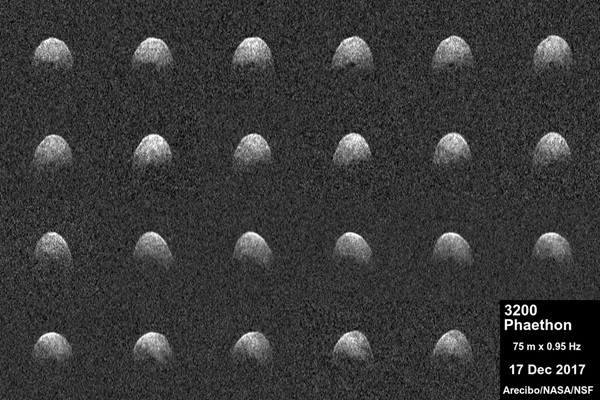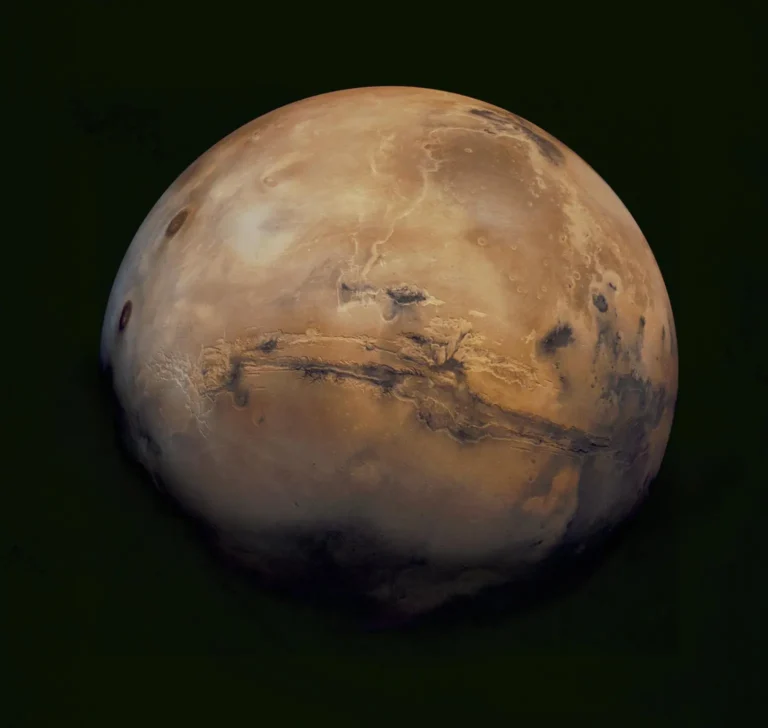Key Takeaways:
The images, captured at a resolution of 250 feet (75 meters) per pixel, reveal the asteroid is spheroidal in shape and has a larger body than previously thought. Researchers originally believed that the object had a diameter of about 3 miles (4.8 kilometers), but the new snapshots show it has a diameter of roughly 3.6 miles (6 kilometers). The researchers also used Arecibo’s radar to spot a depression near 3200 Phaethon’s equator that stretches a few hundred meters at minimum, as well as a dark, spherical spot close to one of the asteroid’s poles.
“These new observations of Phaethon show it may be similar in shape to asteroid Bennu, the target of NASA’s OSIRIS-REx spacecraft, but more than 1,000 Bennus could fit inside of Phaethon,” said Patrick Taylor, Universities Space Research Association (USRA) scientist and group leader for Planetary Radar at Arecibo Observatory, in a press release. “The dark feature could be a crater or some other topographic depression that did not reflect the radar beam back to Earth.”
Because of its large size and close proximity to Earth, Phaethon is categorized as a “potentially hazardous” asteroid, being the second largest object with that designation. NASA’s Planetary Defense Coordination Office relies on radar technology to observe, classify, identify specific features, and accurately establish orbital paths for these asteroids.
“Arecibo is an important global asset, crucial for planetary defense work because of its unique capabilities,” said deputy director of Arecibo Observatory and USRA’s Joan Schmelz. “We have been working diligently to get it back up and running since Hurricane Maria devastated Puerto Rico.”
Though Arecibo’s structure was only minimally damaged when the hurricane hit, a long-term lack of power and diesel fuel for its generators has drastically hampered its radar operations. The observatory was able to reestablish radio astronomy observations within a few days of the storm, but radar technology wasn’t up and running until commercial power was restored in early December.
With fully functional radar at the Arecibo Observatory, NASA’s will be able to track and monitor asteroids that could pose threats to Earth. More information about the Planetary Defense Coordinator Office can be found here.









